This post may contain affiliate links. Please read our disclosure policy.
Mitarashi dango is a Japanese treat that consists of charred rice dumplings glazed with a sweet and salty sauce. It’s chewy, toasty, and fun to make! Enjoy this sweet treat as an afternoon snack with tea!

⭐️ Why You Should Try It
- Sweet, salty, and toasty. This Dango captures the perfect blend of sweet and salty. Meanwhile, the toasty, almost burnt flavor brings a comforting taste that will get you addicted in no time!
- Chewy and sticky. It has the perfect amount of chewiness and firmness, creating a dreamy texture that any mochi fan will love.
- Simple to prepare. While this delightful treat may seem complicated, it’s not! You will need less than 30 minutes and only 6 ingredients to make it. Much easier than planning a trip to Japan!
🍡 What Is Mitarashi Dango
Mitarashi dango (みたらし団子) is a traditional Japanese treat made from rice dumplings that are charred and then coated with a sweet and salty soy sauce glaze. It is chewy, like mochi, and packed with umami!
There are many different types of dango. Here are a few of the most popular ones:
- Hanami dango: Also called Sanshoku dango, the rice dumplings come in 3 colors: green, white, and pink to celebrate spring colors. This type of dango is rarely served with a sauce.
- Anko dango: Anko paste, which consists of cooked adzuki beans and sugar, is spread on top of the rice dumplings.
- Mitarashi dango: This type of dango is charred over an open flame and then coated with a sweet soy sauce glaze.
- Goma dango: This version is coated with a sweet black sesame sauce, giving it a dark appearance.
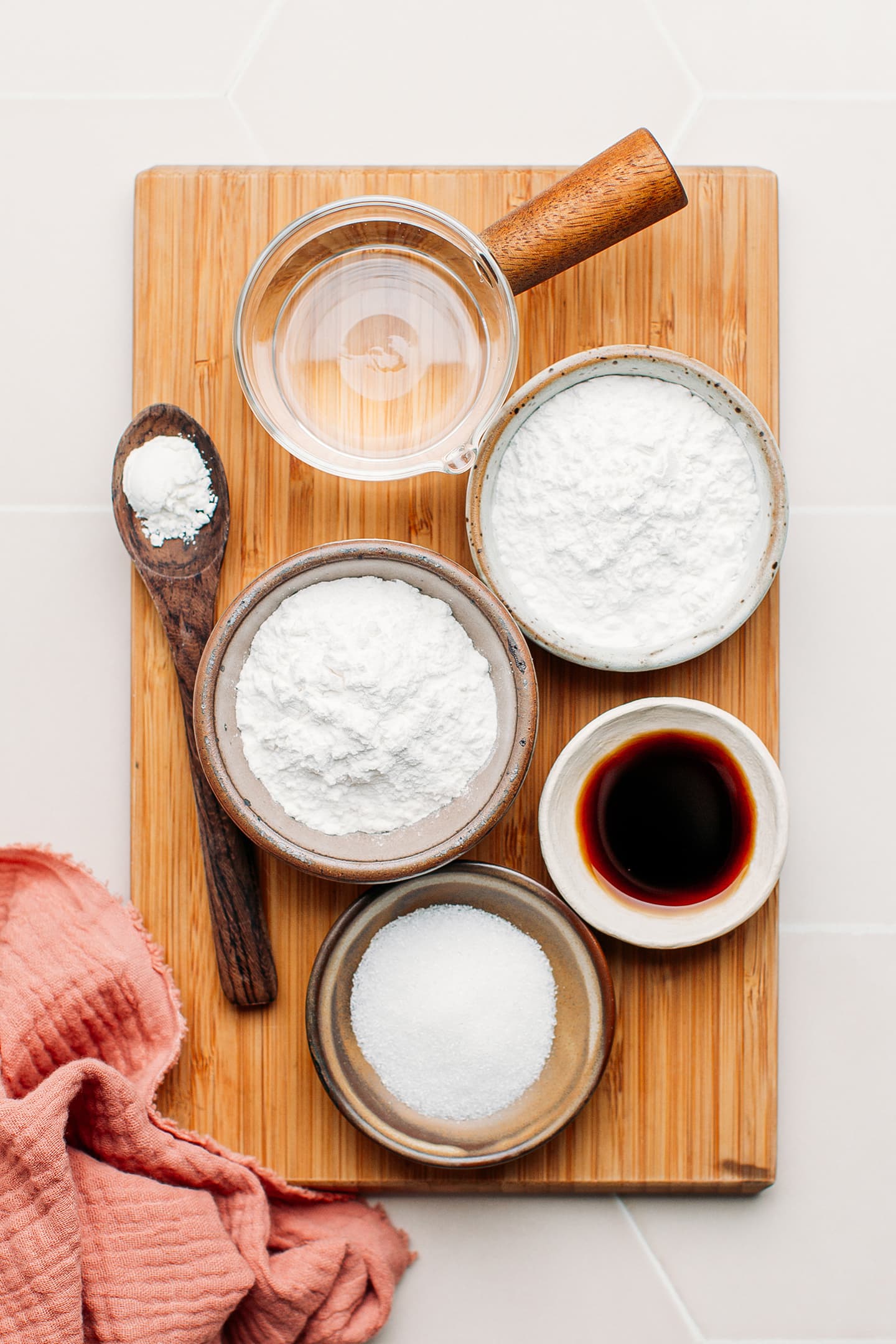
🍚 Ingredient Notes
These sweet dumplings require only 6 ingredients. Here is what you will need:
- Sweet rice flour – Also called glutinous rice flour, it’s essential as it contributes to the chewiness of the dumplings.
- White rice flour – White rice flour gives more structure and a subtle firmness to the dumplings.
- Sugar – To sweeten both the dumplings and the glaze. I went with granulated white sugar, but feel free to use light brown sugar or coconut sugar for the glaze.
- Soy sauce – For saltiness and plenty of umami. To make this recipe gluten-free, replace the soy sauce with coconut aminos.
- Mirin – Optional. For a hint of tanginess. If you don’t have it on hand, omit it. Your dango will still taste delicious!
- Cornstarch – To thicken the glaze.
🥣 How to Make It
Make the rice dumplings
- Whisk together the dry ingredients. Add the sweet rice flour, white rice flour, and sugar to a mixing bowl. Whisk until combined.
- Add the water. Next, pour in the water. I recommend starting with 95% of the water and adding more as needed.
- Knead. Using your hands, knead until it forms a firm dough. The dough should not be too soft, wet, or crumbly. If it’s too dry, add more water, 1 teaspoon at a time.
Shape and cook
- Scoop out balls of dough. Using a measuring spoon, scoop out 2 teaspoons of dough.
- Roll into balls. Gently roll each ball between the palms of your hands until smooth.
- Cook. To cook the dumplings, bring a large pot of water to a boil. Once boiling, add the dumplings and cook for about 3 minutes. I recommend stirring with a spoon to create a vortex and prevent the balls from sticking to the bottom of the pot. Once the dumplings are floating, cook for one more minute.
- Drain and rinse. Fill a bowl with ice-cold water and transfer the cooked dumplings into it using a slotted spoon. This will stop the cooking process. You can then drain the dumplings and transfer them to a plate lined with plastic wrap.
Toast
The next step consists of toasting the rice balls:
- Start by piercing 4 dumplings onto a skewer. Repeat with the remaining dumplings and place them on a plate lined with plastic wrap to prevent sticking.
- Toast. Working with one skewer at a time, toast the rice dumplings evenly until charred. To do so, you can use a kitchen blowtorch or grill the dumplings on the stove over an open flame.
I tried both versions and while toasting with a blow torch gives the dumplings a more even browning, charring over an open flame creates a deeper smokiness.
Make the Mitarashi sauce
- Combine the ingredients. Add the sugar, soy sauce, mirin, and water to a saucepan. Whisk together the cornstarch with the water in a small bowl and set aside.
- Let simmer. Bring the sauce to a boil and let it simmer for about 1 minute or until the sugar dissolves.
- Thicken. Pour in the cornstarch slurry and whisk until the sauce thickens. You can then transfer the sauce to a small bowl and pour it over the dango!
🍵 How to Serve It With
Dango is considered a type of “wagashi” which refers to Japanese sweets that are often served with tea or drinks. You can serve this Mitarashi dango as an afternoon snack with coffee or tea. It goes particularly well with Hojicha, Sencha, or matcha!
📔 Tips
- Adjust the sweetness to your liking. While this recipe is not overly sweet, you can easily reduce the sweetness by using less sugar in the dumpling dough and/or the glaze. It won’t really alter the texture.
- Add the water gradually. Since not all flours are equal, slowly pour the water into the flour and knead until it forms a firm but not crumbly dough. You might not need to use the full amount of water. Be aware that if your dough is too soft, the dumplings won’t keep their shape well during the cooking process.
- Serve immediately. Dango is best served immediately while the dumplings are tender and the syrup is warm. After a while, the dumplings tend to harden.
- Dust with Kinako. For more flavor, you can dust the dango with Kinako, a toasted soybean flour.

💬 FAQ
Glutinous rice flour cannot be substituted. It plays a crucial role in achieving a chewy texture.
No, the toasting step is optional, but I highly recommend it as it adds a lot of flavors and an addicting smokiness to the dumplings.
I do not recommend making it ahead of time for optimal flavor and texture. If you have leftover rice dumplings, you can store them in an airtight container in the refrigerator and reheat them in a steamer basket for 2-3 minutes.
Dango has a mild flavor and tastes like sweet rice. That’s why the glaze is essential to add flavor.
If you ever wanted to get a taste of those Japanese sweets without leaving your home, you are going to love this recipe! The chewiness complemented by the toasty notes and the sweet and salty glaze make this dessert a real treat!


Save this recipe!
Enter your email below and I’ll send it to your inbox!
Plus, you will receive new recipes every week!

Mitarashi Dango
Ingredients
Dango
- 3/4 cup (93 g) glutinous rice flour
- 1/4 cup (27 g) white rice flour
- 2 and 1/2 tbsp (30 g) granulated sugar
- 5 tbsp (74 ml) water adjust if needed
Mitarashi sauce
- 1/4 cup (60 ml) water
- 2 tbsp (25 g) granulated sugar
- 1 tbsp (15 ml) soy sauce
- 1 tbsp (15 ml) mirin optional
- 2 tsp (5 g) cornstarch diluted in 1 tsp water
Instructions
Dango
- Whisk together the dry ingredients. Add the sweet rice flour, white rice flour, and sugar to a mixing bowl. Whisk until combined.
- Next, pour in the water and knead using your hands until it forms a firm dough. If it's too dry, add more water, 1 teaspoon at a time until the dough is firm but not crumbly.
- Scoop out balls of dough. Using a measuring spoon, scoop out 2 teaspoons of dough.Gently roll each ball between the palms of your hands until smooth, and transfer them to a plate.
- Cook. To cook the dumplings, bring a large pot of water to a boil. Once boiling, add the dumplings and cook for about 3 minutes. I recommend stirring with a spoon to create a vortex and prevent the balls from sticking to the bottom of the pot. Once the dumplings are floating, cook for one more minute.
- Drain and rinse. Fill a bowl with ice-cold water and transfer the cooked dumplings into it using a slotted spoon. This will stop the cooking process. You can then drain the dumplings and transfer them to a plate lined with plastic wrap.
- Skewer. Pierce 4 dumplings onto a small skewer. Repeat with the remaining dumplings and place the skewers on a plate lined with plastic wrap to prevent sticking.
- Toast. Working with one skewer at a time, char the rice dumplings evenly until lightly charred. To do so, you can use a kitchen blowtorch or grill the dumplings on the stove over an open flame. Be careful not to burn yourself!
- Transfer the charred dango to a serving plate and top with the Mitarashi sauce. Serve immediately!
Mitarashi sauce
- Combine the ingredients. Add the sugar, soy sauce, mirin, and water to a saucepan. Whisk together the cornstarch with the water in a small bowl and set aside.
- Let simmer. Bring the sauce to a boil and let it simmer for about 1 minute or until the sugar dissolves.
- Thicken. Pour in the cornstarch slurry and whisk until the sauce thickens.
Notes
- Adjust the sweetness to your liking. While this recipe is not overly sweet, you can easily reduce the sweetness by using less sugar in the dumpling dough and/or the glaze. It won’t really alter the texture.
- Add the water gradually. Since not all flours are equal, slowly pour the water into the flour and knead until it forms a firm but not crumbly dough. You might not need to use the full amount of water. Be aware that if your dough is too soft, the dumplings won’t keep their shape well during the cooking process.
- Serve immediately. Dango is best served immediately while the dumplings are tender and the syrup is warm. After a while, the dumplings tend to harden.
- Dust with Kinako. For more flavor, you can dust the dango with Kinako, a toasted soybean flour.
Nutrition

About the Author
Thomas Pagot is the founder, photographer, and recipe developer behind Full of Plants. He created the blog in 2016 as a personal cookbook for vegan recipes. Through years of recipe development, Thomas has successfully grown Full of Plants into a trusted resource for plant-based recipes.

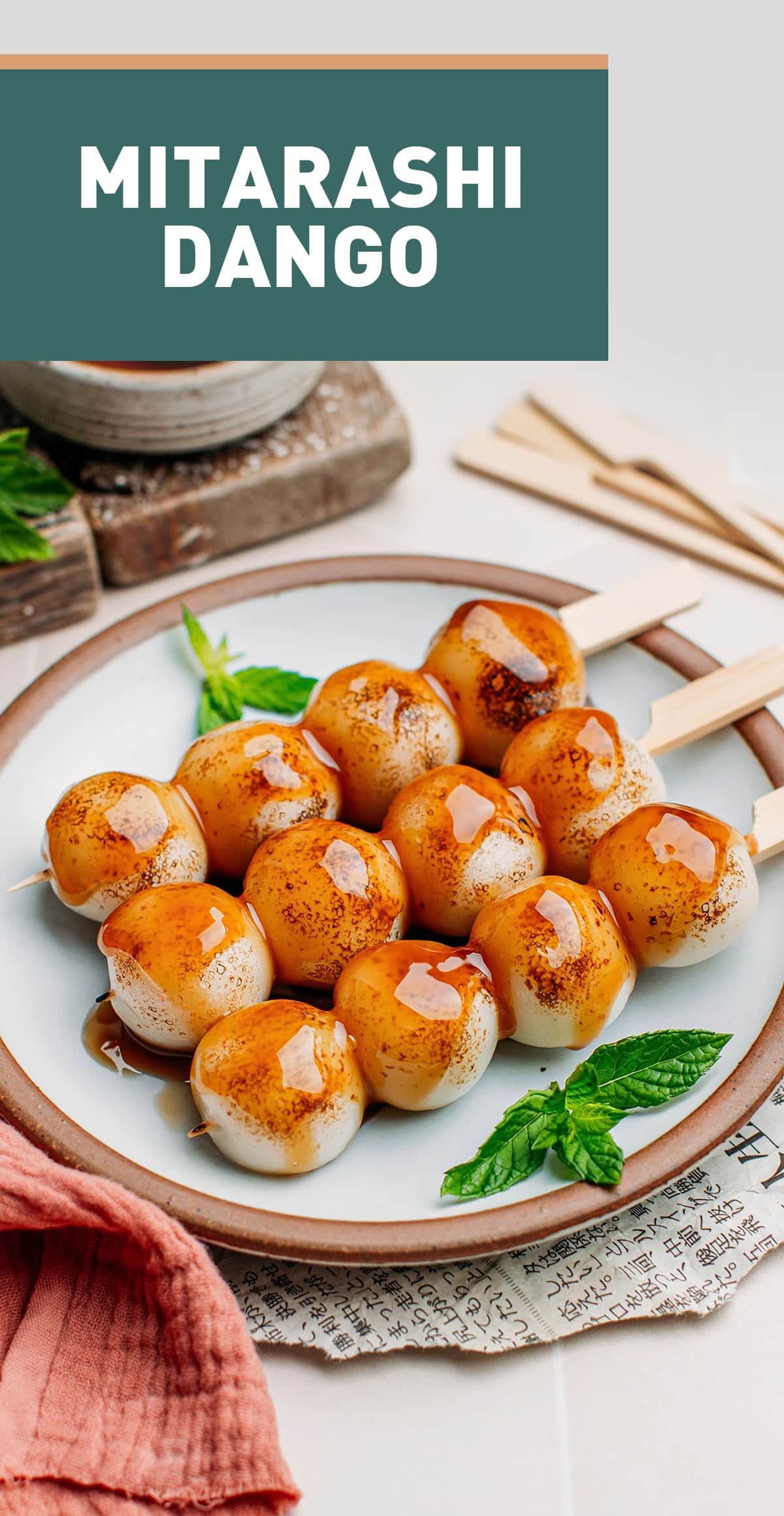
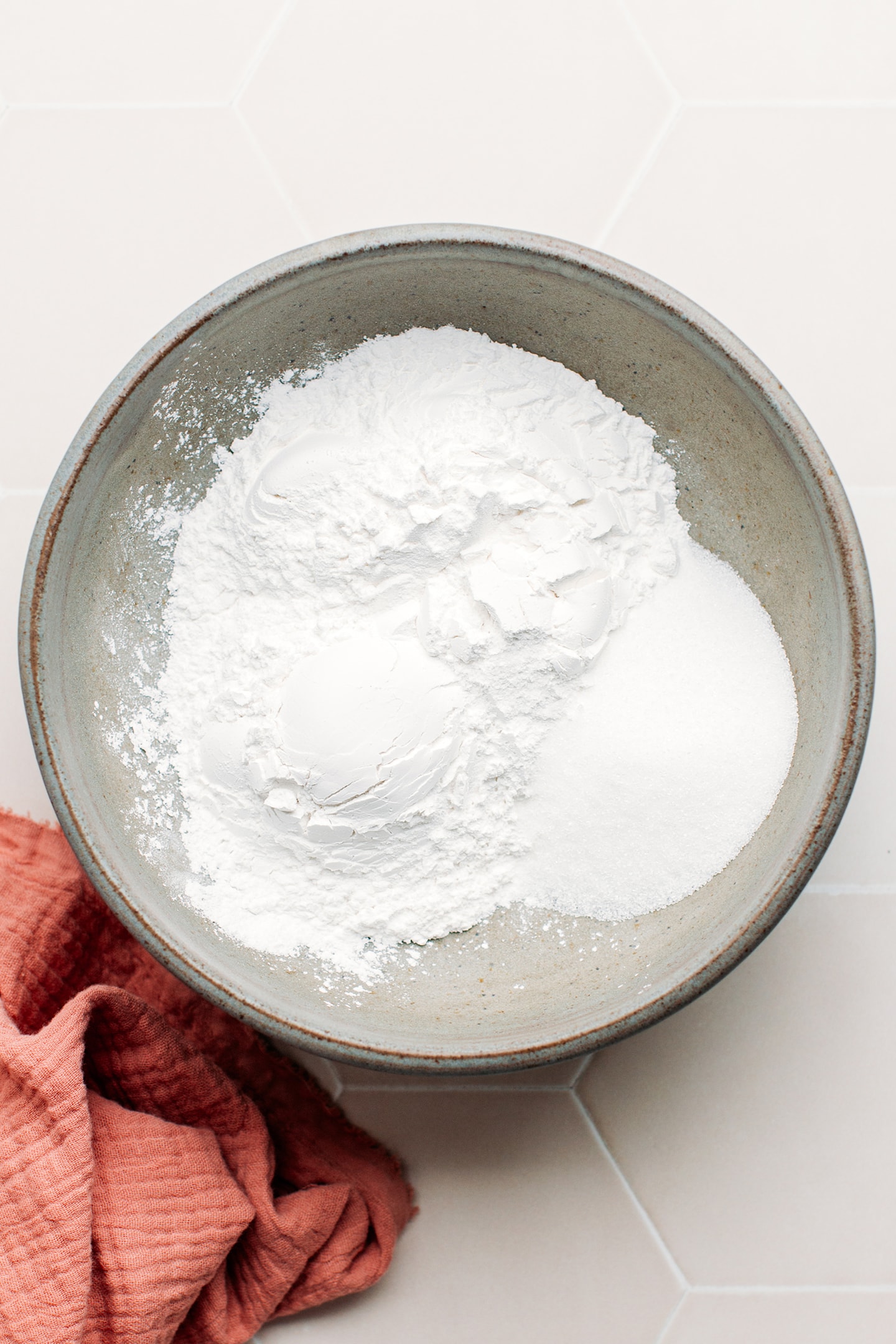
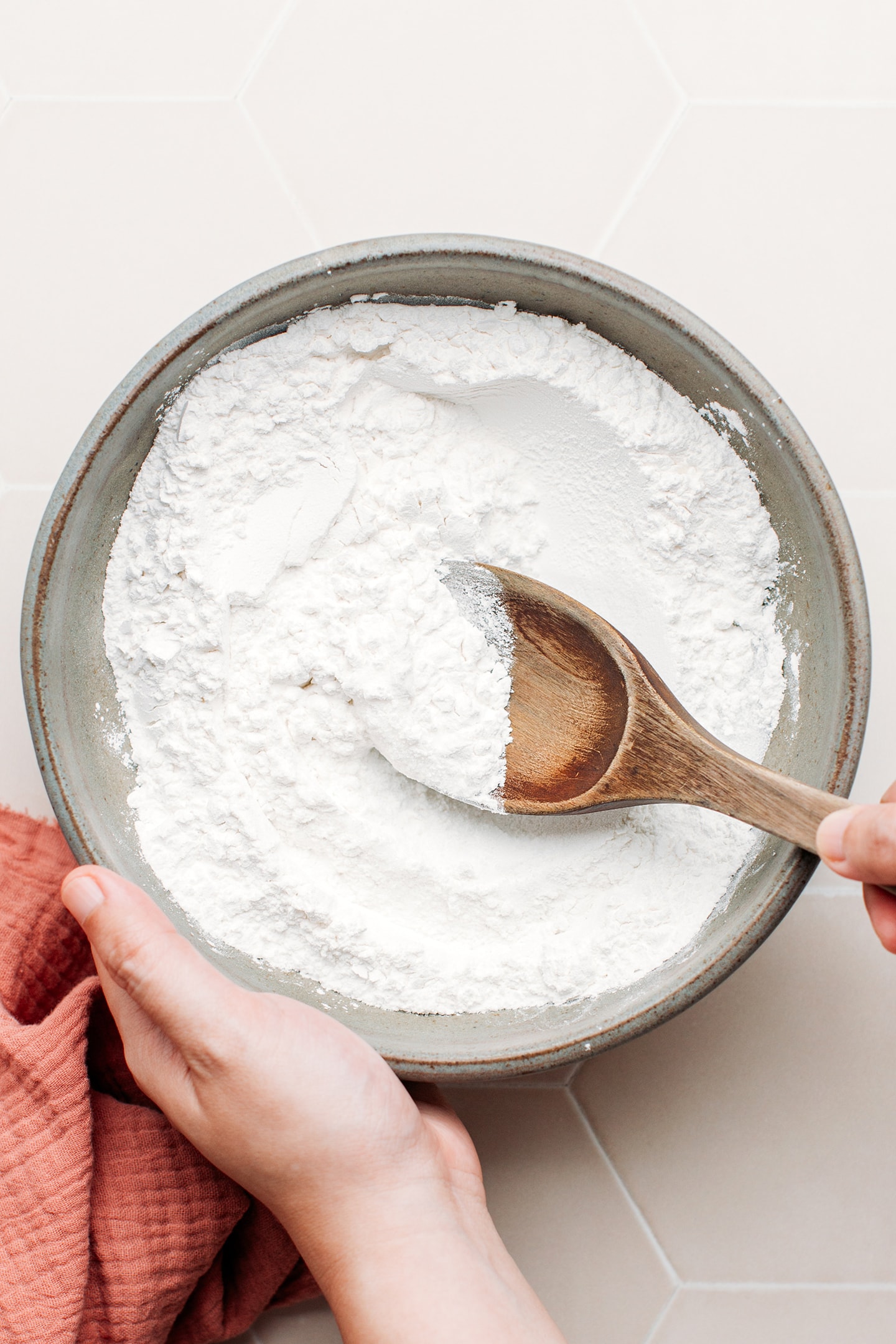

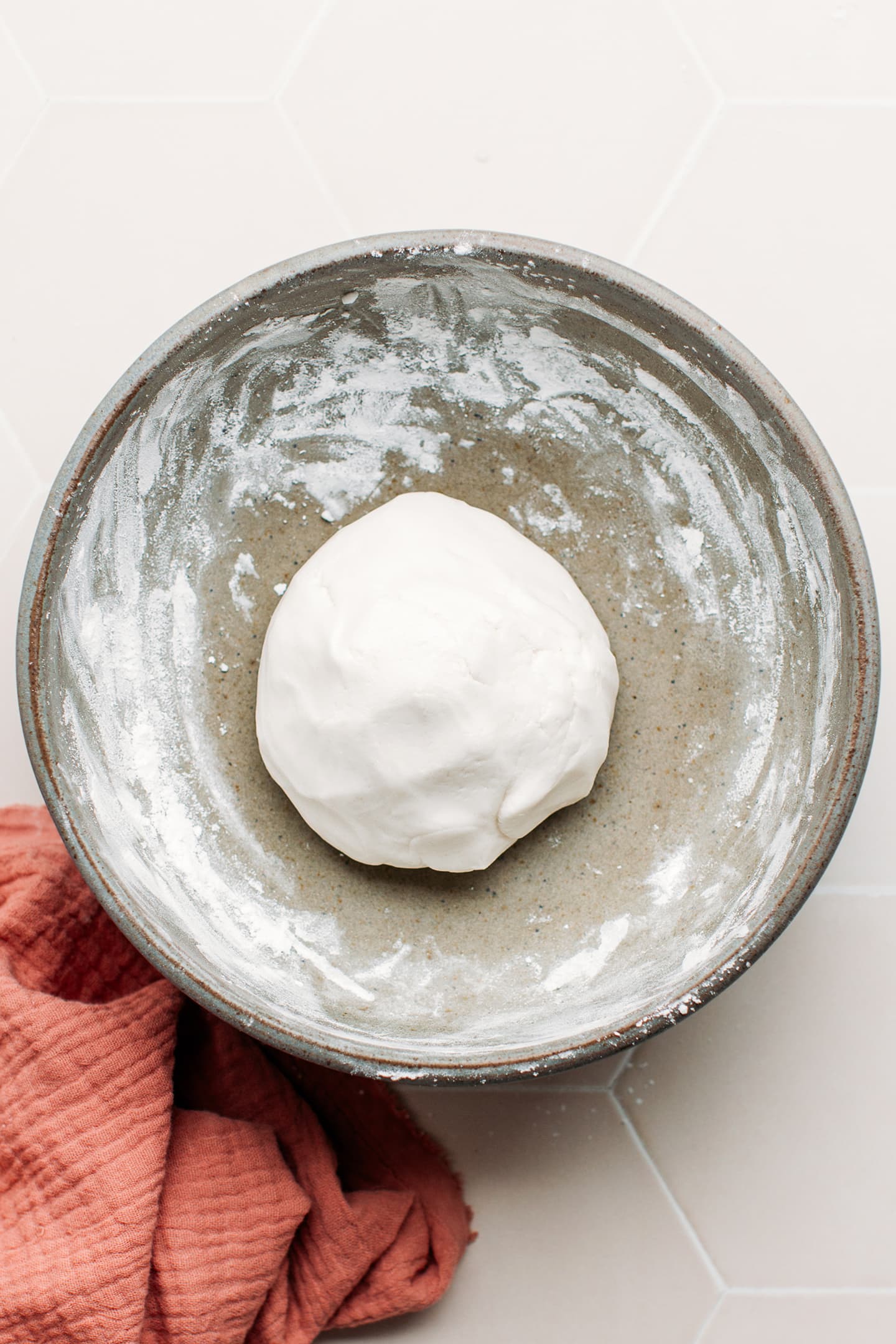






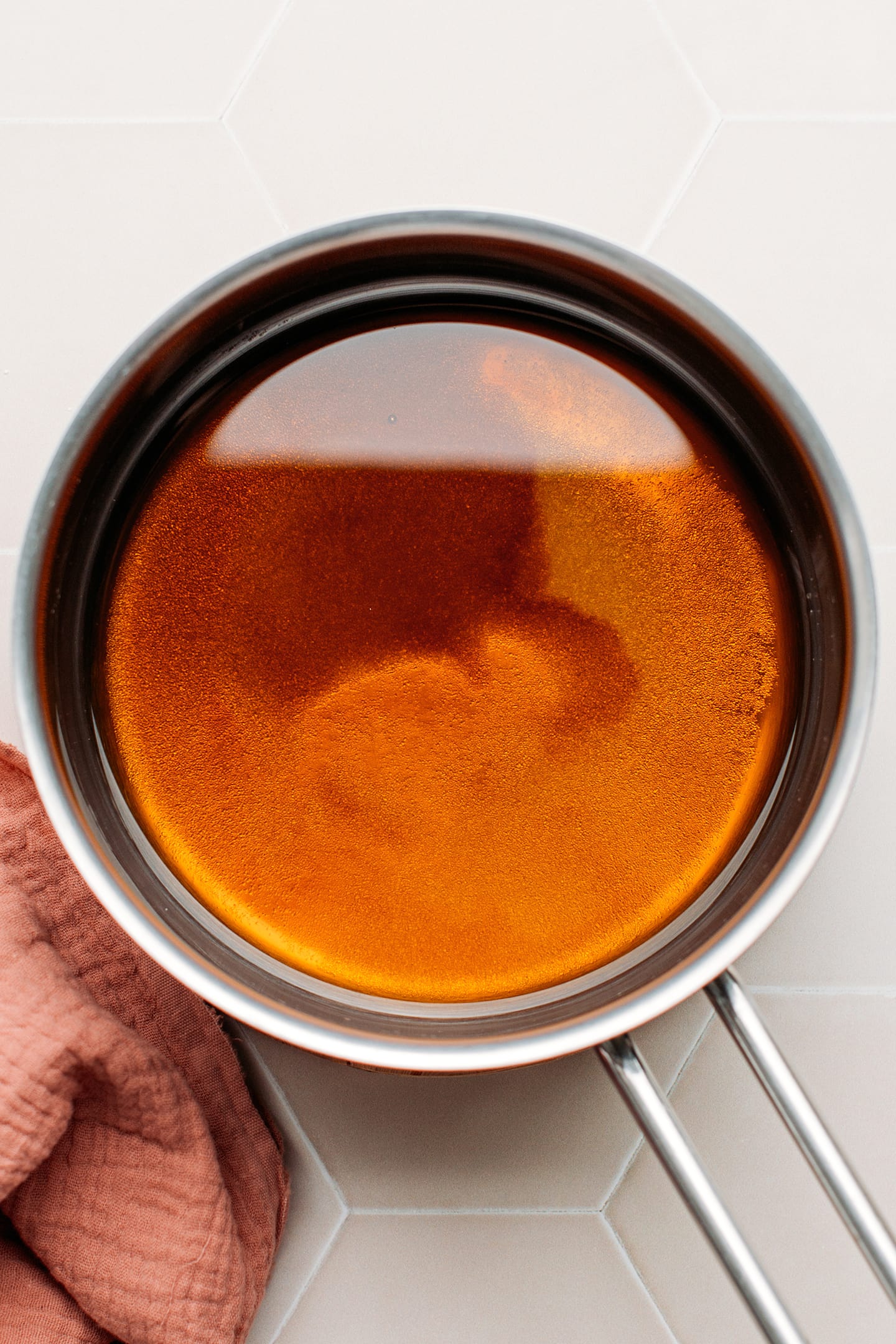





Leave a Comment
It’s a new afternoon snack. I must try it.
THIS looks interesting Thomas. Can’t wait to try this!!!
Thanks Deb 😉